By Riley Rath
Darkvision in D&D 5e is stupid.
Everyone has it and no one knows how to make it fun.
Here are the official rules and some interesting, homebrew racial options.
Boom. Intro over.
Table of Contents
- The Obligatory Introductory Rant
- 5e Darkvision Basics (What Every Player Gets WRONG)
- How WOTC Messed Up Darkvision in 5e
- How to Fix D&D 5e Darkvision
- Cave Darkvision
- Starry Darkvision
- Inherited Darkvision
- Depths Darkvision
- Superior Darkvision
- Shadow Darkvision
- True Darkvision
- Conclusion
Some Dice have Darkvision Too...
View Our Glow in the Dark Sets
The Obligatory Introductory Rant
Ok... the intro isn't quite over...
Let's start with this tooooootally unbiased fact I just so happen to passionately believe:
In the current iteration of Dungeons and Dragons, darkvision sucks really bad.
No, no, no... don't fight it... just accept the truth... things will only get better when you do... It isn't fun, or cool, or anything exceptional really. It's an annoying, forgettable, disappointment. And given that D&D is a fantasy game, that is crazy.
I mean, come on... humans have been ACHING for something like darkvision since the Stone Age. To be able to actually SEE in the dark... just like during the day? To be a nocturnal creature at home in the light of the moon!? Doesn't that sound... ENCHANTING??! TRANSCENDENT?!
Darkvision has amazing fantasy and encounter potential.
But instead of something special, what is darkvision like in D&D 5e instead?
A joke... repeated on DnD podcast episodes (like Dungeoncast) as that thing EVERYTHING in the game seems to have.
An afterthought... something DM's forget, or at least never place in the top ten of their "things to consider" for a combat encounter.

Darkvision is not special and that is a serious shame.
How did it get this way? Well, I'll be the first to raise my hand: for years I have perpetuated the misuse of darkvision in my 5e campaigns. But I'm no martyr... with my other hand, I will point at everyone else... WE ARE ALL RESPONSIBLE!
Thankfully, not only is D&D just a fun game (and therefore nbd), but it's also really easy to fix darkvision in D&D 5e. All it takes is a few reminders and a few homebrew rules.
What I am going to do is A) identify why darkvision is a let down and B) show you HOW to use it to make your games FUN.
Double the Fun in the Dark
With Our Glow in the Dark Dice
5e Darkvision Basics (What EVERY D&D Player Gets Wrong)
I'll cut right to the chase... 90% of us do not know how 5e darkvision works.

But it's ok! It's not like you are feigning ignorance to gain bonuses in session (if you are... hecka LAME). It is quite likely you simply do not understand some specifics.
Most new players equate the D&D darkvision ability with the only real-world correlation: night vision goggles. They assume that if you take away the green and make it gray... bam!... you can see areas of darkness as clear as day!
Well... I hate to burst your bubble... but darkvision is NOT the same as night vision goggles.
Shockingly, real-world science does not match fantasy tabletop. For instance, the most common form of DnD darkvision only lets you see 60ft of darkness as dim light. But the range of night vision goggles is SIX HUNDRED FEET (300 yards... 3 football fields)! And that's just goggles... some night vision scopes can see up to 3,000 seet at night (waaaay beyond darkvision range)!

The Goggles of Night (© WOTC) are NOT night vision goggles!
Now, it's not relevant for this post to dive into the physics of how night vision goggles amplify infrared light by passing electrons through a phospor screen... but it is very relevant to talk about the specific rules of darkvision in the Player's Handbook, pages 183 and 185:
-
Each creature/monster with darkvision only has it for a certain range (usually 60ft).
-
Within that range, they can see DARKNESS like DIM LIGHT
-
Within that range, they can see in DIM LIGHT like BRIGHT LIGHT
-
Darkvision only sees in shades of gray (ok... that one kind of is like the night vision goggles...)
Tons of players just assume darkvision turns night into day. They imagine their character can just "turn on" their eyes and suddenly the world around them is bright and clearly visible for hundreds of yards. As though it is infinitely better than a torch when you are in full darkness.
But that's not what happens at all... all 5e darkvision does is affect what around you is DIM light and what around you is BRIGHT LIGHT. It makes everything close to you a little easier to see. Basically, darkvision just extends your character's visibility.
5e visibility rules = better 5e darkvision
But visibility is such a big, confusing topic
that we felt it deserved its own post
About how visibility can help players have immersive fun
and DMs can include it in encounter design.
So before you go any further, we suggest you read it first.
How WOTC Messed Up Darkvision in 5e
Hopefully you went and read the visibility post. There I place the burden of responsibility upon players knowing the visibility rules and Dungeon Masters incorporating it into their encounter design. I also added some homebrew to make it a little more consistent and interesting.
Together, visibility rules can make darkvision an engaging and exciting part of our campaigns... as revealed in this actual-play true story from my own campaigns (if you skipped it, don't! Scroll back up and read it!)
However... WOTC is far from blameless. And in my opinion, they just completely biffed it when it came to darkvision.
The darkvision rules are so simple they make no sense.
In DnD 5e, you either have darkvision or you do not. That is it. No nuance... no variety... just all or nothing. And I'm a big proponent of simplicity in D&D 5e, but sometimes it can be TOO simple.
After all, it is a role-playing game, there is an element of character customization, couldn't we get more than two options?!? We are just supposed to assume that a dwarf that mines under the mountains and an elf that takes walks under the stars BOTH have darkvision that works exactly the same? No racial or cultueral variations to darkvision whatsoever?! It's ridiculous.
And here is the thing... the creators kinda agree!

They understand that he races of the Underdark... drow, duergar, and deep gnomes... all would have lived their entire lives in subterranean lairs that only give off a faint glow. So, logically, these races have superior darkvision:
- Their darkvision range is extended to 120 feet, and
- They have "sunlight sensitivity"... which basically means they have disadvantage doing anything in bright light/sunlight.
Now THAT is some good darkvision variety: awesome racial flavor that makes our D&D experience richer! Also... there is Blindsight and Truesight... but those are A) ultra-rare and 2) have nothing to do with seeing in the dark... so... skip!
Basically, WOTC made this ONE exception for anyone who had a childhood in the Underdark... but nothing else (except the vampire's Sunlight Hypersensitivity). Which is an outrage: no darkvision to distinguish the Orcs of Grummsh from the Dragonborn, descendents of dragons?! (Don't worry, we'll fix that later). But while WOTC has this problem with a lack of VARIETY... they make it worse by having a problem with QUANTITY...
Way, WAY too many races and monsters have darkvision.
Take the original 8 playable races... only THREE do not have darkvision. With the expansion of the playable races, the percentage of those with darkvision went down from 66% to 51%... BUT THAT IS STILL 25 RACES WITH DARKVISION!!!
And what about monsters? There are hundreds of monsters in fifth edition... surely darkvision is a special ability that should surprise players?
NOOOOPE!! Just over HALF (1.2... 50%) of the 1,200 D&D 5e monsters across the published resources and adventures have darkvision. And if the odds of an enemy having darkvision are so high that players can flip a coin, then it's not a surprise or novelty... they just plan for it every time.
Psssst! If you are looking for EVERY race, monster, and means of darkvision... check out Black Citadel RPG's comprehensive list!
In fact, one could argue that darkvision is now seen as a STANDARD for adventurers, rather than something special and unique that sets them apart from their fantasy society. Why else would WOTC offer so many easy ways to get it:
- Uncommon magic items (ex: Googles of Night)
- Class Abilities (ex: Gloom Stalker Ranger)
- Tattoos (ex: Shadowfell Brand tattoo)
- Spells (ex: Darkvision)
- Eldritch Invocations (ex: Devil's Sight)
With aaaaall that in mind... I mean... do I even need to say it?
Yeah I do :)
When everyone has darkvision... no one does...

© Disney
This is why I suspect the ONLY time DMs and players notice darkness is when it is magical darkness. It doesn't matter if you lived in a pocket dimension of darkness your whole life... natural eyes cannot see through a magical shroud!
But you know what happens when a DM drops magical darkness in an encounter? Suddenly... darkness and light becomes a fun, dynamic part of the encounter!
Everyone gets creative... using the darkness to flank or confuse enemies.
Or, if it is wrecking them, they pour through their spells and abilities to find anything that might bring the spell down.
And if there is nothing they can do to affect the darkness, they adjust their priorities in battle and go after the spellcaster.
Magical darkness proves darkvision can be FUN and DYNAMIC.
In summary... no variety + overuse = sucky darkvision. And when we change that, darkvision will become something cool rather than a dumb trope or cheat code.
(Now, this post is focused on USING and FIXING 5e darkvision. It is not an all-in-one guide to every single mention and source of darkvision in D$D 5e. If you are looking for that, you should check out our friends at Black Citadel RPG... their post is quite exhaustive: follow this link).
How to Fix D&D 5e Darkvision
Wizards of the Coast made two mistakes when designing darkvision for D&D 5e: 1) they made it too simple, and 2) too many creatures and monsters have it. As a result, it's not cool or fun.
The solution? DO THE OPPOSITE.
A) Add more variety
B) Divide it up to make it rarer
All it takes to fix 5e darkvision is to add variations that can be dispersed among monsters and creatures. So, finally, here are my homebrew suggestions for "darkvision 2.0":
Cave Darkvision
"While underground or in a structure, a creature can see in dim light within 60ft of it as if it were bright light, and in darkness as if it were dim light. Outside, they have normal vision."

© Grey Knight Dante, Warhammer Wiki
This is the "standard" darkvision... with a twist. These would be creatures that regularly mine or live in caves... any creatures that spend time underground, but not so much that they belong to the Underdark. Best for dwarves, the Gloom Stalker Ranger, bats, and trolls.
Starry Darkvision
"While outside under the starlight and moonlight, a creature can see in dim light within 60ft of them as if it were in bright light, and in darkness as if it were in dim light. In caves they have normal vision."

Moonlight in Caras Galadhon. © Sara Morello.
There are certain creatures that are more "in tune" with nature. They regularly dance in the moonlight and have a special connection with the elements. The rest of us may still struggle with the shadows at night, but these creatures can see by starlight almost as well as they do by sunlight. This is an obvious choice for elven races, but also the Twilight Domain Cleric, storm giants, and pretty much ANYTHING from the feywild.
Inherited Darkvision
"A creature can see in dim light within 60 feet as if it were bright light, and in darkness as if it were dim light. However, during the transition period, at dawn and dusk, if they are outside, they have disadvantage on all perception checks (WIS) relying on sight and on any long rage attacks outside of 15 feet."

Yup, I stole this directly from Reign of Fire... and I'm not sorry. It's an awesome idea from an awesome movie (watch a clip here). The idea is that their darkvision is woven into their racial identity. Obviously, this would be for most dragons, dragonborn, and kobolds, but also tabaxi and owlin.
Depths Darkvision
"While underwater, a creature can see in dim light within 100 feet of it as if it were bright light, and in darkness as if it were dim light. Outside the water, they have normal vision."

© Wizards of the Coast
As anyone who has swam deep in a lake or ocean could tell you, it gets dark... QUICK. And yet, sea creatures' eyes have adapted to the unique way light reflects through water. The Helm of Underwater Action should include this type of darkvision. Any aquatic creature should have this as well, including tritons, bronze dragons, krakens, and sahuagin.
Superior Darkvision
"A creature can see in dim light within 120 feet as if it were bright light, and in darkness as if it were dim light. The creature has disadvantage on attack rolls and on Wisdom (perception) attacks that rely on sight when you, the target of your attack, or whatever you are trying to perceive is in direct sunlight."

© Wizards of the Coast + R.A. Salvatore
This is word-for-word taken from the drow racial features on page 24 of the PHB. It is a combination of "superior darkvision" and "sunlight sensitivity." This is for the races that already have it (drow, duergar, deep gnome) as well as monsters from the Underdark like Hook Horrors and Illithids/Mindflayers. I would also put the Goggles of Night in this category... but make it a rare magic item.
Shadow Darkvision
"A creature can see in dim light within 120 feet as if it were bright light."

Mark Molnar © Wizards of the Coast
Some creatures love the shadows... they dwell in them, linger in them, delight in them. They may feel out of place in a dark cave, but in dim gloom they move like wraiths.
I am sympathetic to arguments that anything in the Shadowfell should have superior darkvision. But the Shadowfell isn't total darkness, and some creatures and monsters would definitely have this instead. Shadow Magic Sorcerers and Shadar-kai should have this version of darkvision, as well as anyone with a Shadowfell Brand Tattoo.
True Darkvision
"A creature can see in dim light within 60ft as if it were bright light, and in darkness as if it were dim light. This is maintained in any environment."

Finally, we are at darkvision rules as currently written. However, having been made much more rare... this is the only "universal" darkvision... and is therefore much more special.
I would place the origin of this kind of darkvision in magic and eldrich evil. warlocks, who make pacts with evil deities, or races with infernal or evil heritage like tieflings or yuan-ti, would all be privy to this kind of darkvision. Beyond the 3rd level spell Darkvision, the warlock invocation Devil's Sight and the magic item "Robe of Eyes."
In Conclusion
There you have it... all the ways I think we make darkvision sucky and stupid... and the best ways I think we can work together to fix it... turning it into something interesting, something fun, and a valuable adventuring tool.
My last point is this: don't be stingy! If a player can justify in their backstory why they should have any of these versions of darkvision... give it to them. Just be sure to incorporate it into your campaign!
Looking Forward to Using Your Character's
New Darkvision in Your Campaign?
Pair It With a Glow in the Dark Dice Set
Riley Rath

Riley is a freelance tabletop games copywriter, content writer, and marketer based out of Spokane, WA. When not playing or writing about board games or DnD, he is busy with family, hiking, cooking, and gardening... very hobbit-like for a 6'4'' dude.






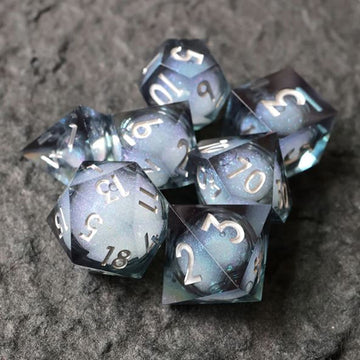
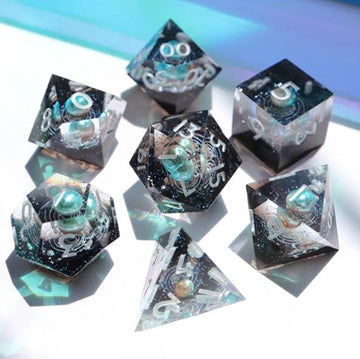
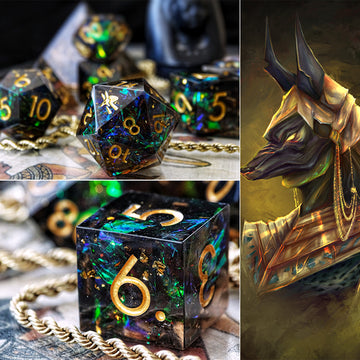
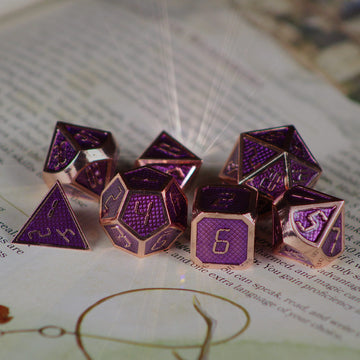
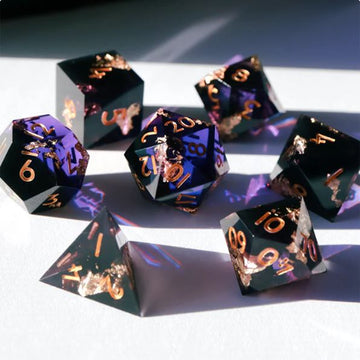
This is such a small thing, a minor nitpick:
You say that truesight has nothing to do with seeing in the dark, but it does let you see in the dark, better than darkvision does since it lets you see in full darkness just as good as bright light.
Thanks for this!
I started playing D&D over 40 years agao, took a long hiatus, and was really confused to learne there had been 2e, 3e, 3.5e, OGL, 4e while I was away. So I started up again with 5e,
And suddenly everyone had “darkvision” — I was used to “infravision” and drow with “ultravision”, but now that everyone had darkvision, no one seemed to worry about all those things I remember fondly – how many torches do we have? How much oil do we use for molotovs, and how much do we need for our lanterns? It really messed up the fun and risks of going underground.
So thank you for this! I will see how to work this in to my next campaign.
Csad
I think a simpler method to fix this is grouping races into buckets of different senses. Yet simplifying Dark vision here.
Having a “lowlight vision” and “darkvision”. All races that have darkvision instead now have lowlight vision. All traits, features and spells with superior darkvision instead have “darkvision”.
Lowlight vision. A creature with lowlight vision sees dim light as if it were bright light.
Darkvision. A creature with darkvision can see dim light as bright light and darkness as as dim light.
However I love the fact that we’re thinking about groups of races differently adapted to light. So goblinoid races like orcs, and such can instead also have better senses for smell. Animalkin could have better senses of thick foliage.
I think this goes miles above WotC raw, they really should be more unique and problem more bonus senses for smell, touch, and hearing instead of just darkvision for most or the race just doesn’t get anything.
The grayscale thing always bugs me so much extra work for DM for no real extra value. I hate that players can walk into a room with no light sources and understand an entire rooms features. Sure they may be at disadvantage but it really is this safety net for players not having to be scared of the dark. Magical darkness requires such a huge justification… placing thick fog everywhere in a cave seems like a cop out.
Anyways I’m glad to see I think I want darkness to be an invading force on the players they have to manage properly, using other senses more that are as direct as sight. I also think all darkvision ranges are insane. 60ft,120ft,300ft in some instances is berserk. Yes let me just design all my dungeons to be 200ft+ just so they can’t make out the otherside of the room easily. Kind of a joke really. They should be quartered or at least a half. If your walk about at night you aren’t seeing past 15ft in front of you clearly, no shot.
Thanks for making me think about the environemnts more though I like the starry night darkvision opposed to cave dark vision and such.
You’re analysis of the issue was great, and I agree with everything except the fix, it is too tedious and impossible to automatically implement in a VTT
By the way instead of calling it “Shadow Darkvision” you could just call it “low light vision” like it was called in earlier editions.